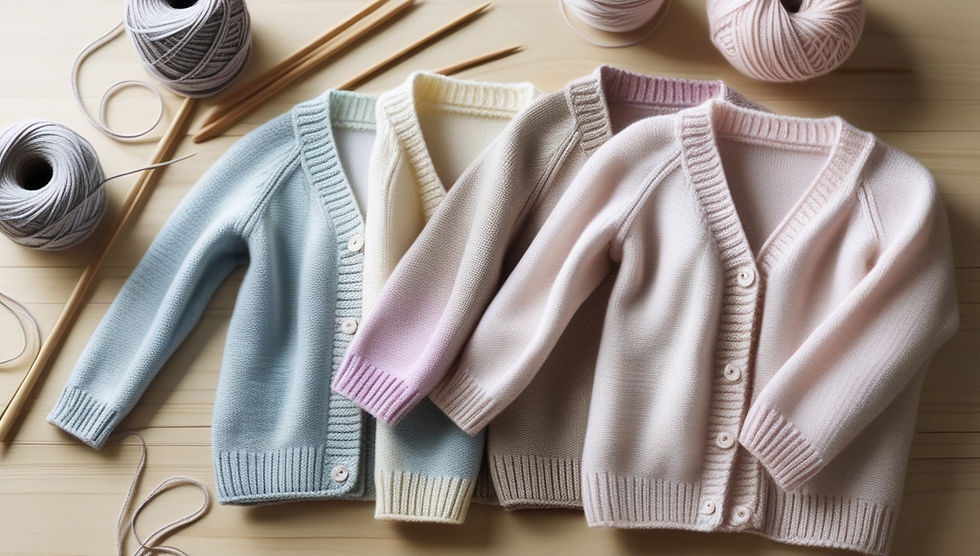How to Choose the Right Blazer Color for Your Skin Tone
- yhknits
- Aug 14
- 4 min read

A blazer is one of the most versatile pieces in a man’s wardrobe. It can instantly elevate your look, whether you’re heading to the office, attending a wedding, or enjoying a casual night out. But here’s the truth most style guides skip over: the color of your blazer matters as much as the fit. The right shade can make you look sharper, healthier, and more confident, while the wrong one can wash you out or clash with your features.
Choosing a blazer isn’t just about following trends; it’s about finding colors that harmonize with your skin tone. Let’s break it down step-by-step so you can invest in blazers that work for you.
Step 1: Identify Your Skin Tone
Before talking colors, you need to know your skin tone category. Generally, men fall into three main tone groups:
Cool Undertones
Skin has hints of blue, pink, or rosy tones.
Veins on your wrist look blue.
Silver jewelry looks better than gold.
Warm Undertones
Skin has golden, peachy, or yellow hues.
Veins on your wrist appear green.
Gold jewelry tends to be more flattering.
Neutral Undertones
A balance of warm and cool tones.
Veins may appear bluish-green.
Both gold and silver jewelry look equally good.
Tip: Check your undertone in natural daylight for the most accurate reading.
Step 2: Best Blazer Colors for Cool Skin Tones
If your skin has cool undertones, lean towards colors that complement those cooler shades.
Navy Blue – A timeless choice that pairs perfectly with cool skin. Works for both business and evening events.
Charcoal Gray – Sleek and sophisticated; a safe bet for any formal setting.
Crisp Black – Ideal for sharp, modern outfits, especially in evening wear.
Jewel Tones – Deep emerald, royal blue, and burgundy bring vibrancy without overwhelming your natural coloring.
Avoid: Earthy browns, mustard, and olive greens — these can dull your complexion.
Step 3: Best Blazer Colors for Warm Skin Tones
Warm undertones glow in earthy, rich hues.
Camel & Tan – Perfect for casual or smart-casual outfits. Adds warmth to your look.
Olive Green – Strikes a stylish balance between casual and refined.
Rust & Terracotta – Great for autumn-inspired wardrobes.
Warm Navy – Navy with a hint of warmth (rather than icy blue) complements your golden undertones beautifully.
Avoid: Very cool grays, stark blacks, or icy blues — they can make your skin look sallow.
Step 4: Best Blazer Colors for Neutral Skin Tones
If you’re neutral, you’re in luck — you can pull off most colors. Still, there are a few standouts:
Medium Gray – A great all-season option.
Soft Beige – Works well in summer and spring.
Muted Blues – Not too warm, not too cool — perfect for balance.
Classic Black – Always looks elegant and versatile.
Avoid: Extremely bright neon shades — they can overpower your balanced complexion.
Step 5: Factor in Hair & Eye Color
Your hair and eyes also influence how colors look on you. For example:
Light Hair + Light Eyes: Softer colors like light gray or sky blue work well.
Dark Hair + Dark Eyes: Rich, deep colors like navy, charcoal, and burgundy are flattering.
Light Hair + Dark Eyes: Mid-tone colors like camel or warm gray create a balanced look.
Dark Hair + Light Eyes: Contrasts like charcoal or deep green enhance your features.
Step 6: Consider the Occasion
Even if a color flatters you, it still needs to fit the setting:
Corporate Meetings – Navy, charcoal, and black are safest.
Casual Events – Try tan, olive, or patterned blazers.
Evening Dinners or Parties – Jewel tones or dark, rich colors stand out without being loud.
Step 7: Seasonal Adjustments
Your skin tone may look slightly different depending on the season (tanner in summer, lighter in winter). This is why many men own multiple blazer colors:
Summer – Lighter fabrics in beige, light blue, and soft gray.
Winter – Wool or tweed blazers in charcoal, navy, or deep green.
Step 8: The Fabric-Color Connection
Color can look very different depending on the fabric:
Wool – Colors appear richer and deeper.
Linen – Colors tend to look softer and lighter.
Cotton Twill – A balanced matte finish that works for most shades.
For example, a navy linen blazer will feel more casual and summery, while a navy wool blazer will look formal and winter-ready.
Step 9: Patterns & Accents
If you’re not ready to commit to a bold color, patterns can help you ease into it:
Checks & Plaids – Introduce color subtly.
Pinstripes – Keep it classic while adding interest.
Contrasting Lapels – A daring but stylish twist.
Step 10: When in Doubt, Go for Versatility
If you’re buying your first or second blazer, choose a color that works across occasions. Navy and medium gray are safe bets because they pair well with most shirt and trouser colors.
Once you have the basics, branch out into seasonal or statement colors.
A Quick Word on Quality
A blazer’s color might look great, but if the fabric and tailoring are poor, it won’t do you justice. This is why choosing from a trusted source is key. If you’re shopping online or from a men's blazer manufacturer, check customer reviews, fabric details, and return policies to make sure you’re getting a piece that lasts.
Final Thoughts
The right blazer color isn’t just about fashion — it’s about enhancing your natural features and feeling confident. By identifying your skin tone, considering the occasion, and paying attention to seasonal changes, you can build a collection that always works in your favor.
Remember, a blazer is an investment. Choose colors that not only match your complexion but also your lifestyle. That way, every time you slip one on, you’ll look like it was made just for you — because, in a way, it was.





Comments